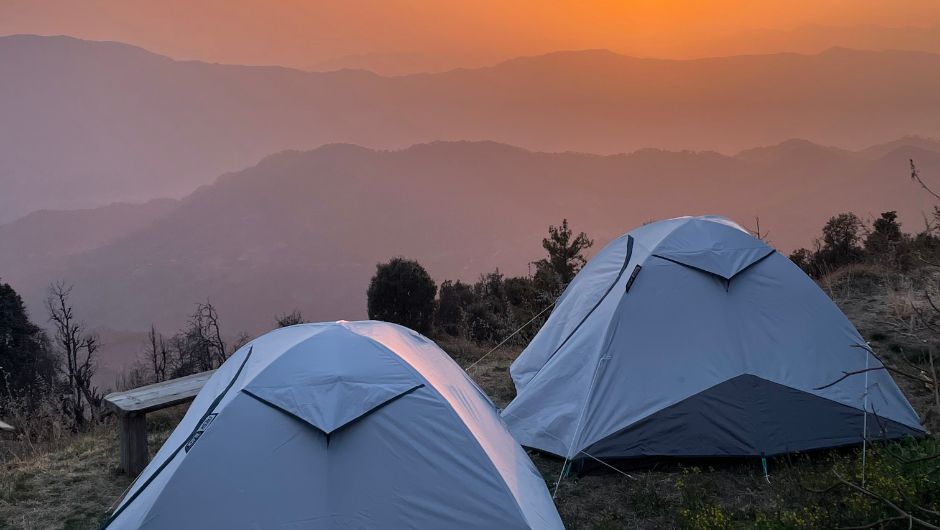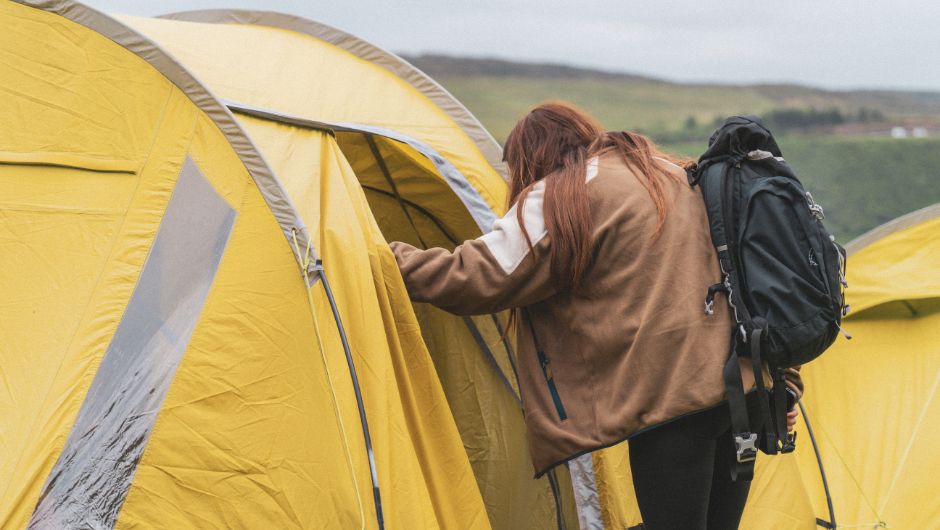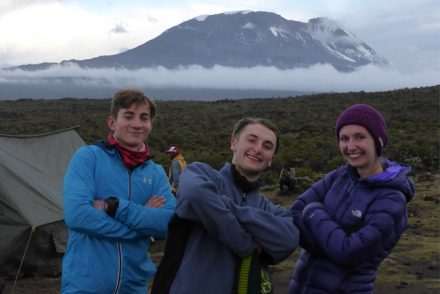Many of our overseas and multi-day UK challenges include camping, and even some of our exclusive one-day events may feature a night under the stars. If you’re new to camping, don’t worry, we’ve got you covered with the basics. This guide will walk you through how to prepare and our top tips for keeping comfortable, warm, and ready for adventure.
For multi-day challenges, we’ll usually provide the tents for you – but if your challenge requires you to supply a tent yourself, our partners at Outdoorhire or Cotswold Outdoor are great companies to get some advice, rent or buy quality camping kit from. Just remember: space matters! A one-person tent feel be very small, especially on rainy days when you’ll need room for your bag and to get changed inside. Learn more about our Clothing and Equipment Participant Discounts here.

What to Pack: Camping Checklist
Remember, which kit is and isn’t provided on your particular challenge will be made clear to you on your trip documents, found within your Participant Account Area (check your Kit List, Trip Notes and Final Details). With this is mind, here’s our camping packing checklist, covering the bare essentials, and optional extras…
Essentials:
- Sleeping bag and sleeping mat – check the recommended temperature rating for these on your kit list.
- Headtorch – needed to navigate the dark evenings and early morning starts whilst getting ready in your tent! Always bring spare batteries as the cold can drain batteries overnight.
- Dry bags / Packing cubes – super useful for organising your kit, as well as keeping wet and dry kit separate (plastic bags work too!)
- Warm clothing layers – it’s important to consider that the temperature can often drop overnight during challenges. Lightweight thermal layers are ideal e.g. a pair of thermal sleeping socks, gloves, beanie and a neck buff (we provide Charity Challenge buffs on all our challenges!). Keeping your extremities warm is important, as your hands, feet and head lose heat the fastest.
Team Tips: We highly recommend physically going into an outdoor store such Cotswold Outdoor to get a sleeping bag and sleeping mat fitted. Sleeping bags come in a variety of sizes (men, women and kids) and a variety of shapes (rectangular, semi rectangular, mummy, and double-wide). If you like to move around in your sleep, a mummy shaped sleeping bag might not be the option for you! Once you have decided on your sleeping bag, make sure you match your sleeping mat with the same size and shape to ensure you do not roll off during the night! – Jenn Payne, Charity Challenge Leader

Optional Extras:
- Sleeping bag liner – not an essential, but helps keep your sleeping bag clean and can add an extra lightweight layer of warmth. Get this in the same size and shape as your sleeping bag for extra comfort.
- Earplugs & eye mask – block out the noise and light to help you get a restful, uninterrupted night’s sleep. It starts to get bright early when you are camping outdoors!
- Camping pillow – a lightweight blow up pillow, compactable one or even a makeshift pillow made from some dry clothing will support your neck whilst sleeping.
Team Tips: Foil mat – these provide extra insulation from cold or damp ground when placed underneath your sleeping mat – and they really do make a difference! If your sleeping mat isn’t very well insulated, these are a cheaper and compact way to stay warm. – Laura O’Connor, Marketing Assistant

Tips for a Warm, Dry and Restful Camp
Now that you’ve got the essential kit sorted, it’s time to think about how to make camping life run as smooth as possible. A few small habits can save you time and energy – from staying organised for the morning to keeping your gear dry and ready to use…
- Campsite Routines – after a long day trekking, the last thing you need is to waste precious energy and sleep time faffing! Plan your evenings and mornings to run efficiently. For example, change out of your wet kit first and hang to dry (if possible) and keep a dry bag out for the morning. Before dinner, recharge your electronics, refill your water and lay out your thermal sleeping layers, so they’re ready for use. These small habits can make a big challenge feel more manageable.
- Organise your Kit – make use of packing cubes, dry bags and your backpacks pockets to keep your kit organised. Think about how often you’ll need certain items and what you’ll need easy access to the following morning. If you get caught in bad weather, having dry bags will help keep your dry and wet clothes separate.
- Prevent Electronics Draining – did you know, cold temperatures can cause battery powered items to drain faster? Keeping your phone, camera or power-bank close to your body heat (even in your sleeping bag) can prevent their power from draining!
Team Tips: DIY Hot Water Bottles – some water bottles are made to hold hot water safely as well as cold, so if hot water is available, you can fill up your bottle to help keep you warm at camp (always ensure you use your kit as only as intended). If you do not have access to hot water, hand warmers work just as well. I never camp without them! – Jenn Payne, Charity Challenge Leader

Embrace the Spirit of Camping
Embracing the spirit of camping is all part of the challenge! It’s a chance to step away from screens, slow down and truly be present in your surroundings. Sharing tents, routines and stories builds a real sense of teamwork – and a night spent in a campsite offers a rare opportunity to unwind and connect with both nature and your fellow trekkers.
With these handy tips on where to start with camping, we hope you’re now eager to dive into the adventure of Charity Challenges!






No Comments